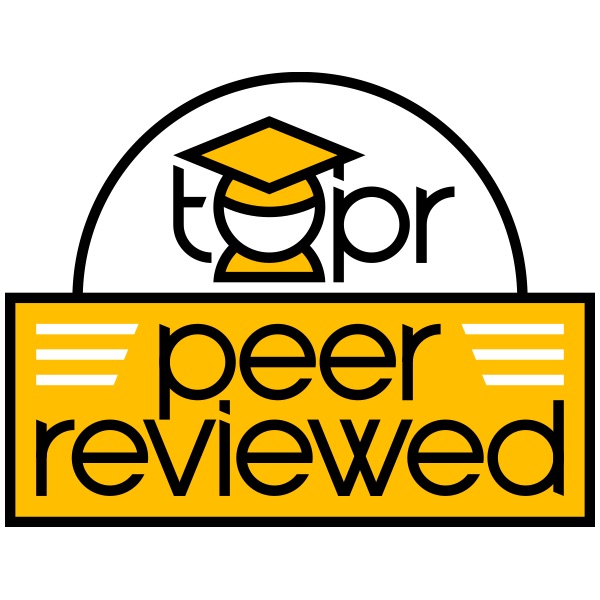
Active learning features a generative component whereby students process the educational material of interest and articulate its relevance within the context of both coursework and their own lives (Fiorella & Meyer, 2015). The effectiveness of active learning may be enhanced through the use of problem-based projects which promote collaboration and higher-order thinking (Grabiner & Dunlap, 1995; Koh, Herring, & Hugh, 2010). In the online environment, project-based assignments may be enhanced by focusing on the potential gap between a pre-identified problem and relevant course-specific knowledge through the development of original content, such as an assignment deliverable (Koh et al., 2010). While this iterative process should be sufficiently complex in order to elicit active learning, it must also be designed in a manner that allows appropriate engagement of students with diverse backgrounds and different levels of academic preparation. The transparency framework focused on developing accessible and relevant assignments for students has been shown to improve academic confidence, sense of belonging, and career-relevant skills (Winkelmes et al., 2016).
Link to example artifact(s)
Course: Kinesiology (Master’s level)
Teacher: David Fukuda, University of Central Florida
Duration: Summer 2017
In an effort to stimulate student engagement and active learning in an online section of Kinesiology, a project-based group assignment was developed. The specified deliverable is a presentation using VoiceThread which allows for asynchronous interaction between students. Compared to in-class presentations, Thor, Xiao, Zheng, Ma, and Yu (2017) reported that the Voicethread online-delivery format resulted in longer discussion time with higher-level questions and better prepared responses.
After implementation, the instructor found that the transparent framework provided a clear means of presenting the assignment objectives, scoring system, and timeline. One student noted the following during the Project Feedback Survey: “Shockingly, no complaints about any of my group members! I typically dislike group projects, but found this one to be one of the most painless group projects I’ve ever done. Each member was very responsible, very supportive, and very active throughout the process.
I think this was an “easy” group project because of the decision to break it down by section and requesting each member select which section on which to work. In addition to allowing each group member to take ownership, it also prevented one person from feeling they needed to swoop in and take control of the project.”
Students appeared hesitant to develop their own original video content and the majority of project-related questions focused on this issue. While more direction could be provided in the future, the diversity of content and approach that were apparent within the group videos may suffer if too much structure is given. The requirement of the students to connect several different, but related, means of addressing and exploring a particular postural distortion pattern was evident within the final projects as well as the subsequent discussion.
The initial introduction to VoiceThread was accompanied with a learning curve for both the students and the instructor which could be remedied by system integration with Canvas (note: a Higher Ed Single Instructor License was obtained for this course, while a Higher Ed Site License is required for system integration). The use of VoiceThread was originally intended to allow for greater feedback and collaboration amongst group members during the development of the project-related materials however this process seems to have been conducted primarily offline via email or Google Docs. The use of VoiceThread did appear to facilitate a more natural, conversational style throughout the discussion portion of the assignment along with more consistent follow-up to classmate comments.
Postural Distortion Pattern Project
Link to scholarly reference(s)
Fiorella, L., & Mayer, R. E. (2015). Learning as a Generative Activity. Cambridge University Press.
Grabinger, R. S., & Dunlap, J. C. (1995). Rich environments for active learning: A definition. ALT-J, 3(2), 5-34.
Koh, J. H. L., Herring, S. C., & Hew, K. F. (2010). Project-based learning and student knowledge construction during asynchronous online discussion. The Internet and Higher Education, 13(4), 284-291.
Thor, D., Xiao, N., Zheng, M., Ma, R., & Yu, X. X. (2017). An interactive online approach to small-group student presentations and discussions. Advances in Physiology Education, 41(4), 498-504.
Winkelmes, M. A., Bernacki, M., Butler, J., Zochowski, M., Golanics, J., & Weavil, K. H. (2016). A teaching intervention that increases underserved college students’ success. Peer Review, 18(1/2), 31.
Citation
Fukuda, D. (2018). Promote active learning in group projects through the use of the transparent assignment framework. In B. Chen, A. deNoyelles, & A. Albrecht (Eds.), Teaching Online Pedagogical Repository. Orlando, FL: University of Central Florida Center for Distributed Learning. https://topr.online.ucf.edu/promote-active-learning-in-group-projects-through-the-use-of-the-transparent-assignment-framework/.